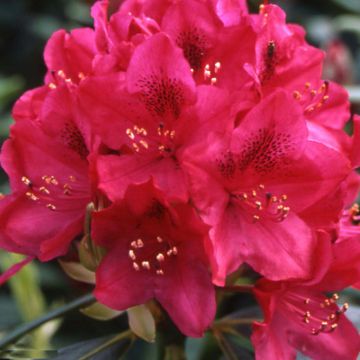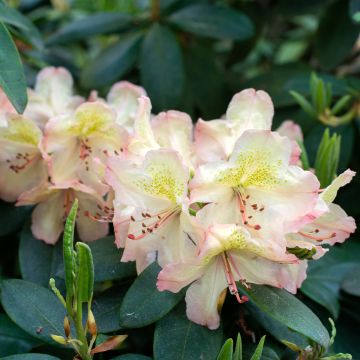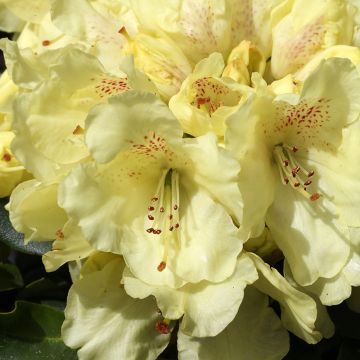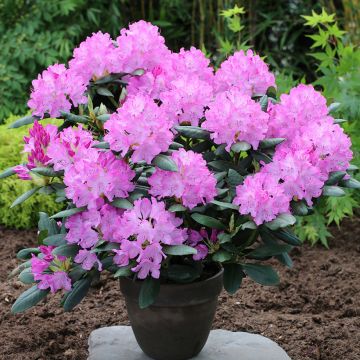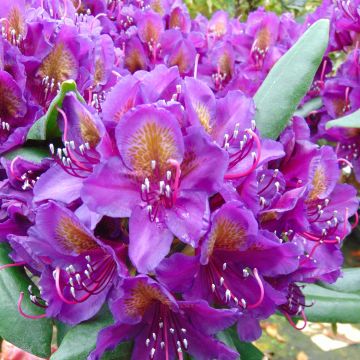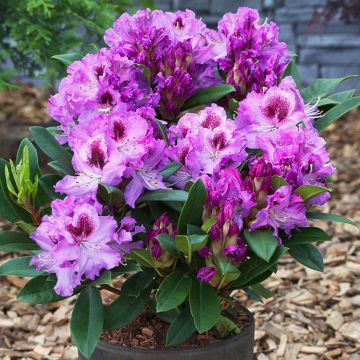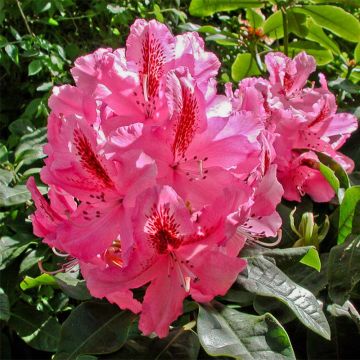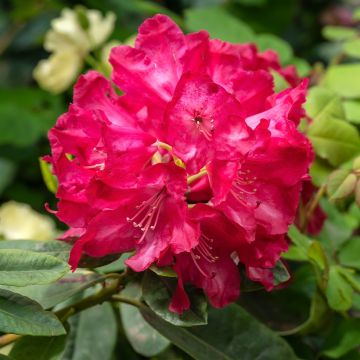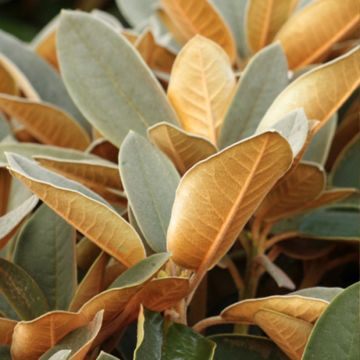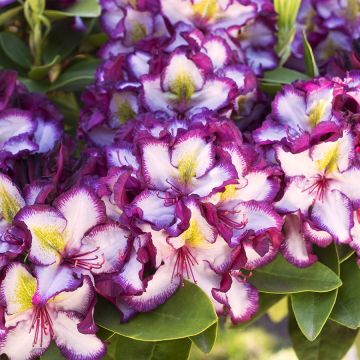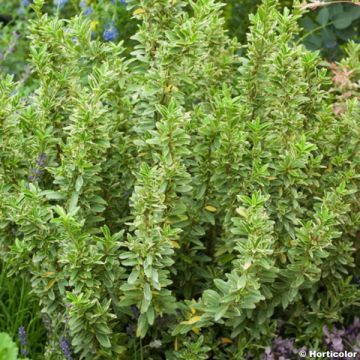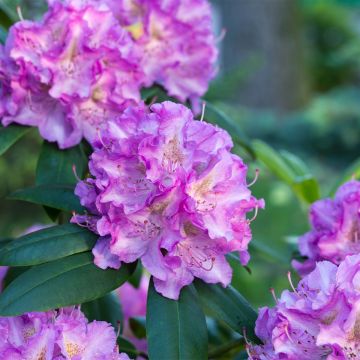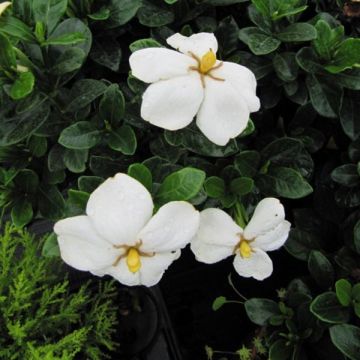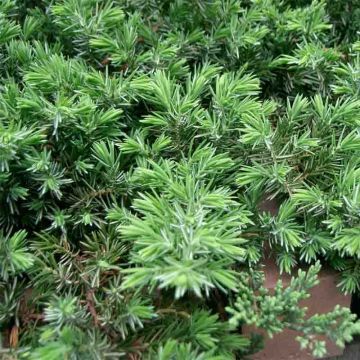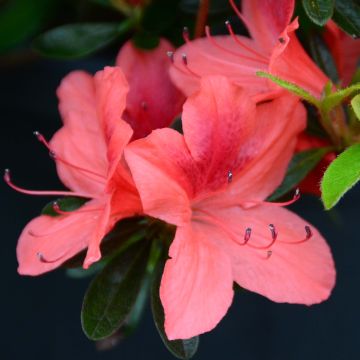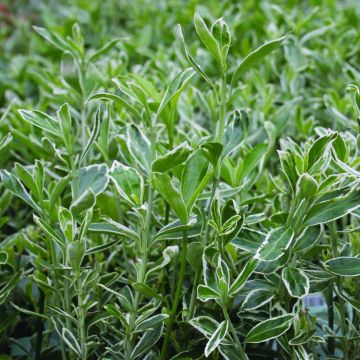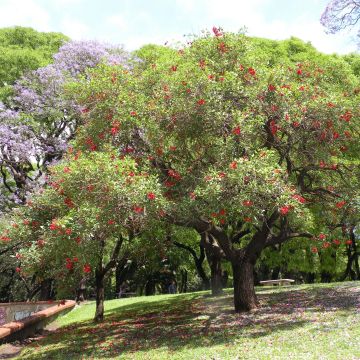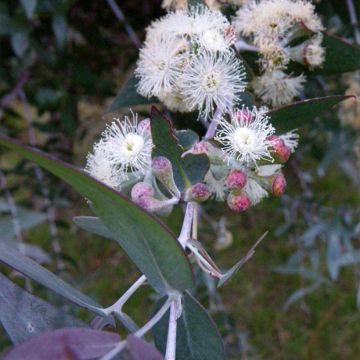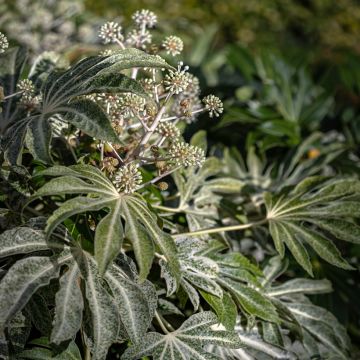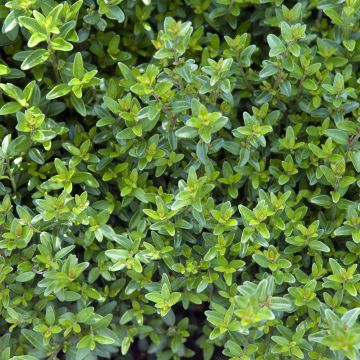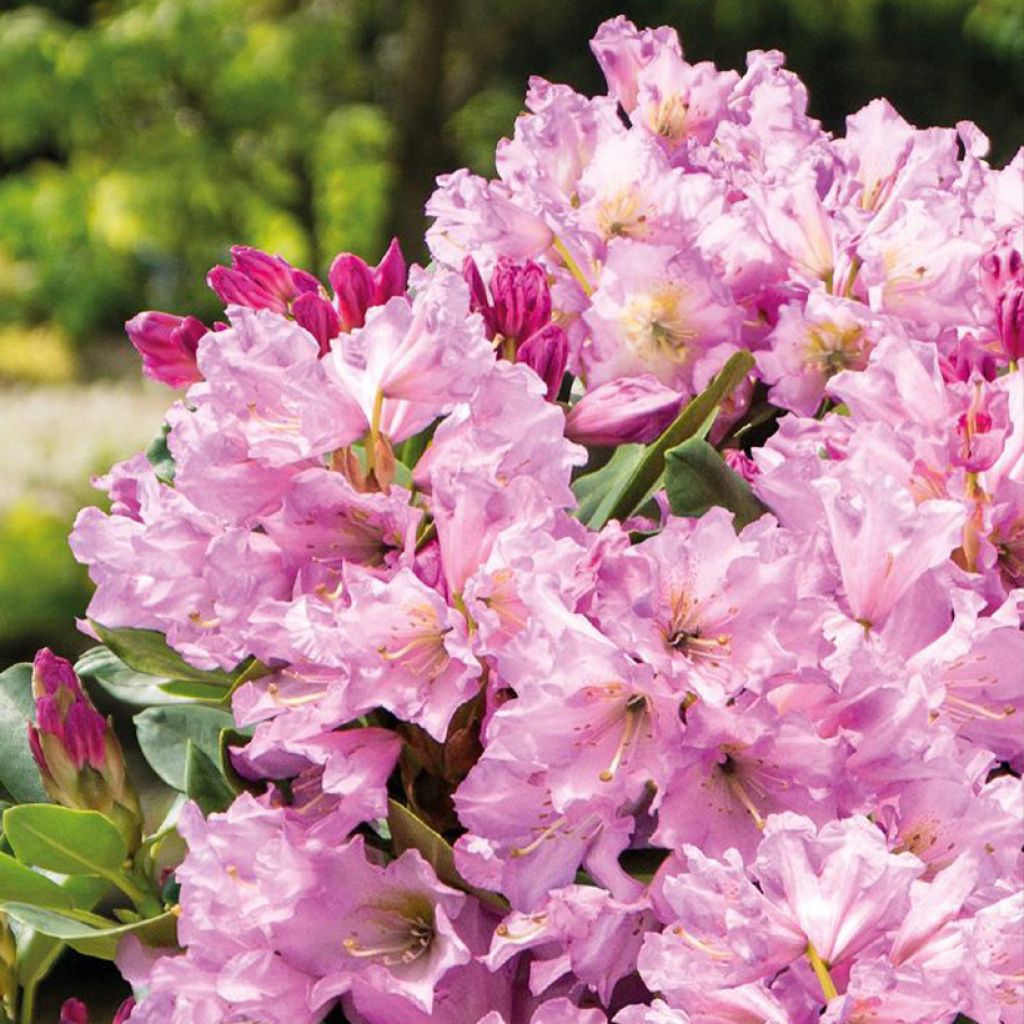

Rhododendron Lilac Dufthecke Inkarho - Rhododendron, Azalea
Rhododendron Lilac Dufthecke Inkarho - Rhododendron, Azalea
Rhododendron INKARHO® Lila Dufthecke
Rhododendron, Azalea
This item cannot be shipped to the selected country
Delivery charge from €5.90
More information
Schedule delivery date,
and select date in basket
This plant carries a 24 months recovery warranty
More information
We guarantee the quality of our plants for a full growing cycle, and will replace at our expense any plant that fails to recover under normal climatic and planting conditions.
From €5.90 for pickup delivery and €6.90 for home delivery
Express home delivery from €8.90.
Does this plant fit my garden?
Set up your Plantfit profile →
Description
The Rhododendron Inkarho Lilac Dufthecke is part of a new series of varieties with fragrant flowers, the "Scented Hedge" series, grafted like all Inkharo rhododendrons onto a plant much more tolerant of clayey, loamy or slightly chalky soils. Lilac Scented Hedge is an evergreen bush, wider than tall, with vigorous growth, bearing a profusion of spring flowers in a distinguished lilac shade, lighter in the centre and darker at the edges, with hints of purple-pink and a slight coppery throat. Hone-producing with a subtle yet present fragrance, it's a new generation of Rhododendron that challenges our preconceptions; it is as tolerant as a hydrangea, hardy and easy to grow.
Rhododendrons encompass over 800 species of the Ericaceae family, cultivated for the beauty of their flowering. The history of Inkharo Rhododendrons, somewhat revolutionary plants recently introduced at the Chelsea Flower Show, began in Germany over 20 years ago. The discovery of a rhododendron naturally growing in a chalk quarry led to the grafting of different varieties onto its extraordinary root system. Shrubs produced by this method tolerate a wide range of soils with a pH ranging from 4.5 to 7.5, provided they are loose, fertile, moist, and not excessively chalky. In summary, soil suitable for hydrangeas. Lilac Scented Hedge forms a medium-sized bush with a spreading habit. Its growth is vigorous, usually reaching 1.50 m in height and 2 m in width at maturity. Its beautiful dark green, evergreen leaves are elliptical and cover the plant well. They have a fuzzy underside. From mid-May to early June, its abundant flowering engulfs the bush: clustered in corymbs, its slightly frilled lilac flowers are adorned with a coppery throat. Touches of purple-pink embellish the flowers here and there.
It is high time for Rhododendrons to break free from acidic soil: this is now possible with the new Inkarho varieties! Moreover, with this Scented Hedge series, they are fragrant and vigorous in growth, in addition to having a particularly abundant and nectar-rich flowering. Rhododendron Lilac Scented Hedge is relatively tolerant in terms of exposure; we recommend planting it in non-scorching sun or partial shade, ideally to the east where it will benefit from the morning sun while being protected from excessive heat. In the garden, as a hedge or in a border, its abundant and bright flowering will easily brighten a shaded space. Much more tolerant than usual rhododendrons, it pairs, in a more classic way, with many other flowering bushes, not necessarily in acidic soil: hydrangeas, mock oranges, Japanese quince trees, butterfly bushes, abelias, or autumn camellias. Japanese anemones will also be good companions, as well as lungworts and foxgloves in the understory.
Report an error about the product description
Plant habit
Flowering
Foliage
Botanical data
Rhododendron
INKARHO® Lila Dufthecke
Ericaceae
Rhododendron, Azalea
Cultivar or hybrid
Other Inkarho Rhododendrons
Planting and care
Plant Rhododendron Lila Dufthecke Inkarho in a semi-shaded location, protected from cold, drying winds, in moist, loose, fertile soil. It will prefer slightly calcareous (pH 7.5 tolerated), neutral or acidic (pH 4.5 to 6.5) soil, suitable for a hydrangea. Dig a hole three times larger than the pot volume. Soak the root ball in water and plant the bush at the collar level, in a nourishing mix composed of leaf compost, gravel or pumice, and loam or topsoil, as Rhododendron Inkarho are demanding plants. Water generously and keep the soil consistently moist. Azaleas and Rhododendrons have a relatively shallow root system. Therefore, they are sensitive to long periods of drought. Hence, enriching the soil with humus and providing abundant watering during dry periods are recommended. Apply a layer of wood chips or mulch around the bush every spring to retain soil moisture while maintaining a slightly acidic pH. Maintenance involves removing faded flowers after blooming and pruning dead branches.
Azaleas and Rhododendrons may sometimes be attacked by vine weevils that eat the leaf edges and rootlets, as well as the notorious "rhododendron borer," which usually doesn't cause severe damage. Effective natural solutions exist against vine weevils. Yellowing of the leaves (chlorosis) in Rhododendron indicates poor iron assimilation in the soil, leading to premature plant death. While limestone is often the culprit, poorly drained soil or deeply planted root ball can also explain the phenomenon.
Planting period
Intended location
Care
This item has not been reviewed yet - be the first to leave a review about it.
Evergreen shrubs
Haven't found what you were looking for?
Hardiness is the lowest winter temperature a plant can endure without suffering serious damage or even dying. However, hardiness is affected by location (a sheltered area, such as a patio), protection (winter cover) and soil type (hardiness is improved by well-drained soil).

Photo Sharing Terms & Conditions
In order to encourage gardeners to interact and share their experiences, Promesse de fleurs offers various media enabling content to be uploaded onto its Site - in particular via the ‘Photo sharing’ module.
The User agrees to refrain from:
- Posting any content that is illegal, prejudicial, insulting, racist, inciteful to hatred, revisionist, contrary to public decency, that infringes on privacy or on the privacy rights of third parties, in particular the publicity rights of persons and goods, intellectual property rights, or the right to privacy.
- Submitting content on behalf of a third party;
- Impersonate the identity of a third party and/or publish any personal information about a third party;
In general, the User undertakes to refrain from any unethical behaviour.
All Content (in particular text, comments, files, images, photos, videos, creative works, etc.), which may be subject to property or intellectual property rights, image or other private rights, shall remain the property of the User, subject to the limited rights granted by the terms of the licence granted by Promesse de fleurs as stated below. Users are at liberty to publish or not to publish such Content on the Site, notably via the ‘Photo Sharing’ facility, and accept that this Content shall be made public and freely accessible, notably on the Internet.
Users further acknowledge, undertake to have ,and guarantee that they hold all necessary rights and permissions to publish such material on the Site, in particular with regard to the legislation in force pertaining to any privacy, property, intellectual property, image, or contractual rights, or rights of any other nature. By publishing such Content on the Site, Users acknowledge accepting full liability as publishers of the Content within the meaning of the law, and grant Promesse de fleurs, free of charge, an inclusive, worldwide licence for the said Content for the entire duration of its publication, including all reproduction, representation, up/downloading, displaying, performing, transmission, and storage rights.
Users also grant permission for their name to be linked to the Content and accept that this link may not always be made available.
By engaging in posting material, Users consent to their Content becoming automatically accessible on the Internet, in particular on other sites and/or blogs and/or web pages of the Promesse de fleurs site, including in particular social pages and the Promesse de fleurs catalogue.
Users may secure the removal of entrusted content free of charge by issuing a simple request via our contact form.
The flowering period indicated on our website applies to countries and regions located in USDA zone 8 (France, the United Kingdom, Ireland, the Netherlands, etc.)
It will vary according to where you live:
- In zones 9 to 10 (Italy, Spain, Greece, etc.), flowering will occur about 2 to 4 weeks earlier.
- In zones 6 to 7 (Germany, Poland, Slovenia, and lower mountainous regions), flowering will be delayed by 2 to 3 weeks.
- In zone 5 (Central Europe, Scandinavia), blooming will be delayed by 3 to 5 weeks.
In temperate climates, pruning of spring-flowering shrubs (forsythia, spireas, etc.) should be done just after flowering.
Pruning of summer-flowering shrubs (Indian Lilac, Perovskia, etc.) can be done in winter or spring.
In cold regions as well as with frost-sensitive plants, avoid pruning too early when severe frosts may still occur.
The planting period indicated on our website applies to countries and regions located in USDA zone 8 (France, United Kingdom, Ireland, Netherlands).
It will vary according to where you live:
- In Mediterranean zones (Marseille, Madrid, Milan, etc.), autumn and winter are the best planting periods.
- In continental zones (Strasbourg, Munich, Vienna, etc.), delay planting by 2 to 3 weeks in spring and bring it forward by 2 to 4 weeks in autumn.
- In mountainous regions (the Alps, Pyrenees, Carpathians, etc.), it is best to plant in late spring (May-June) or late summer (August-September).
The harvesting period indicated on our website applies to countries and regions in USDA zone 8 (France, England, Ireland, the Netherlands).
In colder areas (Scandinavia, Poland, Austria...) fruit and vegetable harvests are likely to be delayed by 3-4 weeks.
In warmer areas (Italy, Spain, Greece, etc.), harvesting will probably take place earlier, depending on weather conditions.
The sowing periods indicated on our website apply to countries and regions within USDA Zone 8 (France, UK, Ireland, Netherlands).
In colder areas (Scandinavia, Poland, Austria...), delay any outdoor sowing by 3-4 weeks, or sow under glass.
In warmer climes (Italy, Spain, Greece, etc.), bring outdoor sowing forward by a few weeks.

































